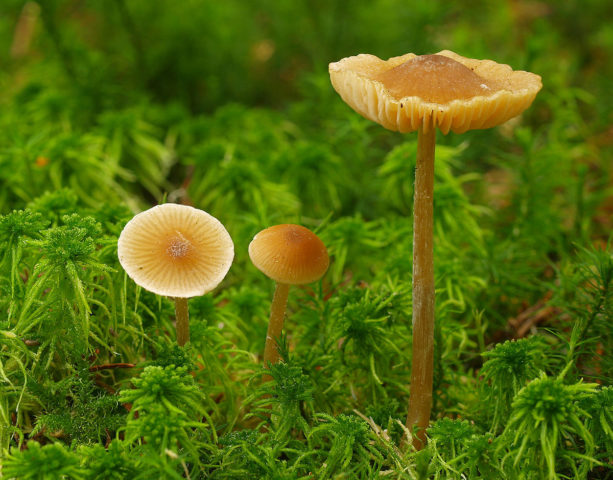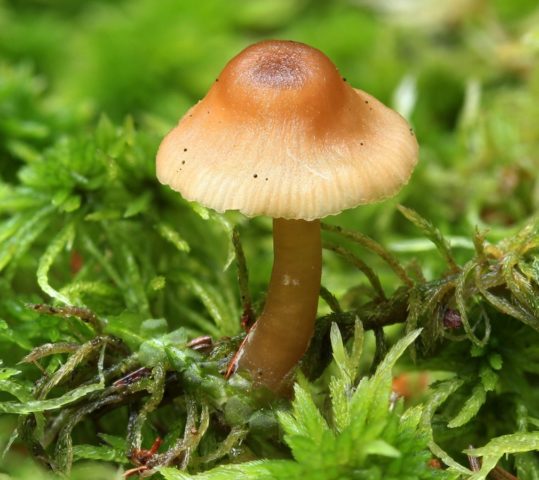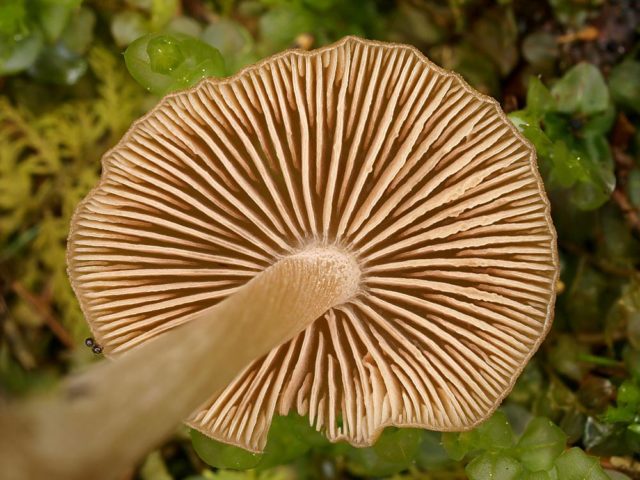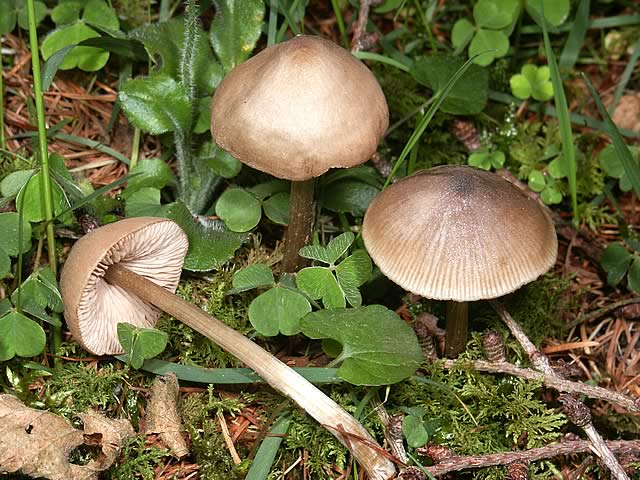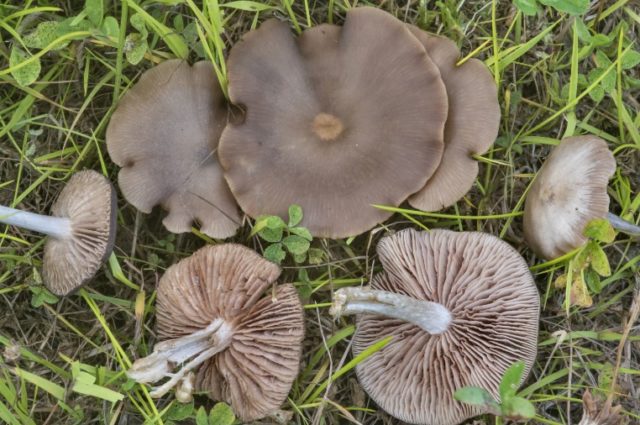Content
Shield-bearing entoloma is a dangerous fungus that, when ingested, causes poisoning. It is found on the territory of Russia in places with high humidity and fertile soil. It is possible to distinguish entoloma from twins by characteristic features.
What does Entoloma shield look like?
The variety belongs to the lamellar mushrooms of the genus Entoloma. The fruiting body includes a cap and a stem.
Description of the hat
The hat is 2 to 4 cm in size. Its shape resembles a cone or a bell. As the fruiting body grows, the cap becomes flatter, the edges bend downward. The surface is smooth, brown with a yellow or gray undertone. The pulp has a similar color.
The plates are sparse, convex, even or wavy at the edges. The color is light, ocher, gradually acquiring a pink undertone. Some plates are small and do not reach the stem.
Leg description
The leg of the shield-bearing species is from 3 to 10 cm high. Its diameter is 1-3 mm. The shape is cylindrical, there is an extension at the base. The leg is hollow inside and breaks easily. The color does not differ from the cap.
Is the mushroom edible or not
Shield-bearing entoloma is a poisonous species. The pulp contains harmful toxins. When ingested, they cause poisoning. Poisonous substances persist even after heat treatment. Therefore, picking this mushroom and eating it in any form is unacceptable.
Poisoning symptoms, first aid
After consuming entoloma, the following symptoms are observed:
- stomach pain;
- nausea, vomiting;
- diarrhea;
- weakness, dizziness.
If these signs appear, it is recommended to consult a doctor. The victim is washed stomach, given to take activated charcoal or other sorbent. In case of serious poisoning, recovery takes place in a hospital hospital. The victim is provided with peace, a diet and plenty of drink are prescribed.
Where and how it grows
The species is found in humid forests. Fruit bodies arise in mixed and coniferous areas. These are plots next to larch, spruce, cedar and pine trees.
The fruiting period is from late May to late autumn. Fruit bodies grow singly or in small groups. On the territory of Russia, they are found in the middle lane, in the Urals and in Siberia.
Doubles and their differences
The shield-bearing entoloma has twins that are similar in appearance to it:
- Entoloma Collected... An inedible mushroom with a brown or reddish cap. There are also white or pinkish discs. The shield-bearing species is dominated by yellow color.
- Entoloma silky... A conditionally edible variety that is eaten. First, the pulp is boiled, after which it is pickled or salted. The species is found on the edges and clearings among the grass.Fruiting from late summer to autumn. Differences from the shield-bearing variety are in the color of the cap. In the shield fungus, the color is brown, pleasant to the touch, without yellow tones. An important nuance - in the edible species, the leg is darker in color than the cap.
Conclusion
Entoloma thyroid contains toxins that are toxic to humans. The species prefers wet areas next to coniferous and deciduous trees. It is easy to distinguish it from edible species in a number of ways.
